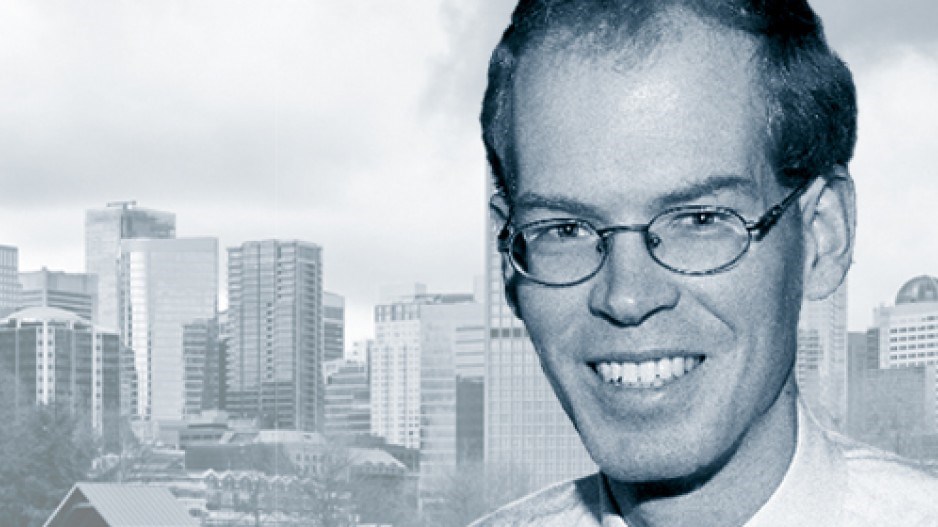Fill ’er up
Chevron Canada Ltd. has put three of its Vancouver locations on the block, citing a revved up property market.
One of the properties is downtown’s second-to-last gas station, at West Georgia and Bidwell streets. One of several redevelopment plays along West Georgia, its redevelopment would leave downtown with just the Esso station at Burrard and Davie streets.
Also on the block is the station on Dunbar at West 39th Avenue and the commercial filling station on Clark Drive at East First.
“These particular locations have a higher and greater land-use potential relative to their current operations,” Chevron said in a statement, noting that it will continue to have 22 retail locations in Vancouver.
Esso sold its retail operations in B.C. and Alberta to 7-Eleven Canada Inc. earlier this year, a move also designed to recoup equity from its sites while keeping its brand in the local market.
Redevelopment capacity
The closure of service stations across the city creates redevelopment opportunities, even though site remediation can take years. The addition of development capacity to the city is good news, however, when supply and density is viewed as critical to putting housing in reach of more people.
But just how much development capacity does the city have?
Ten years ago, departing co-director of city planning Ann McAfee told participants in Simon Fraser University’s City Program that Vancouver had 86,000 undeveloped housing units within its boundaries.
Two years ago, in June 2014, Coriolis Consulting Corp. completed a report for the city that identified 76,257 units of undeveloped housing (including 15,137 units of capacity created since 2009).
“Over the last five years, the City has approved rezonings faster than the new capacity is being used,” it noted, a comment opponents to increased density in the Grandview-Woodland neighbourhood frequently cite. “The City has sufficient capacity in existing zoning and approved community plans to accommodate over 20 years of supply at the recent pace of residential development.”
So how much exists now, and how much is enough?
Queries to the city over the past month failed to yield an answer regarding Vancouver’s current residential development capacity, but the Urban Development Institute’s latest quarterly report on the Metro Vancouver market indicates that population growth is no longer growing at twice the pace of the housing stock (the case for much of the past five years).
Strong housing starts this year combined with weaker population growth mean the ratio has fallen below 1.5 newcomers for every housing start for the first time since fall 2011.
Keeping population growth and starts in step clearly isn’t just about capacity: it’s about being as open to new development as it is to new arrivals.
Crowd capacity
It’s been a hot summer for local ski hills: Mount Baldy finally changed hands, Vail Resorts Inc. made a $1.4 billion bid for Whistler Blackcomb Holdings Inc., and the province recently approved the master plan for the Valemount Glacier Destination Resort.
But in a move cast as sticking it to the Man, Red Mountain Ventures Inc. president and CEO Howard Katkov has turned to the little guy to raise funds for Red Mountain Resort near Rossland.
Crowdfunding allows the average powder enthusiast to stake a minimum of $1,000 on a share in the former community ski hill, which Katkov and fellow investors acquired in 2004.
Transformation of the hill has proceeded slowly since then, but last winter was the resort’s best ever. Moreover, William Cole Companies of Texas is proceeding with the Josie, a new hotel that will add 106 rooms and conference space to the property. It will complement the existing 120-seat conference centre Katkov developed on the mountain, part of an ambitious makeover that since 2008 has largely focused on developing the hill’s amenities.




